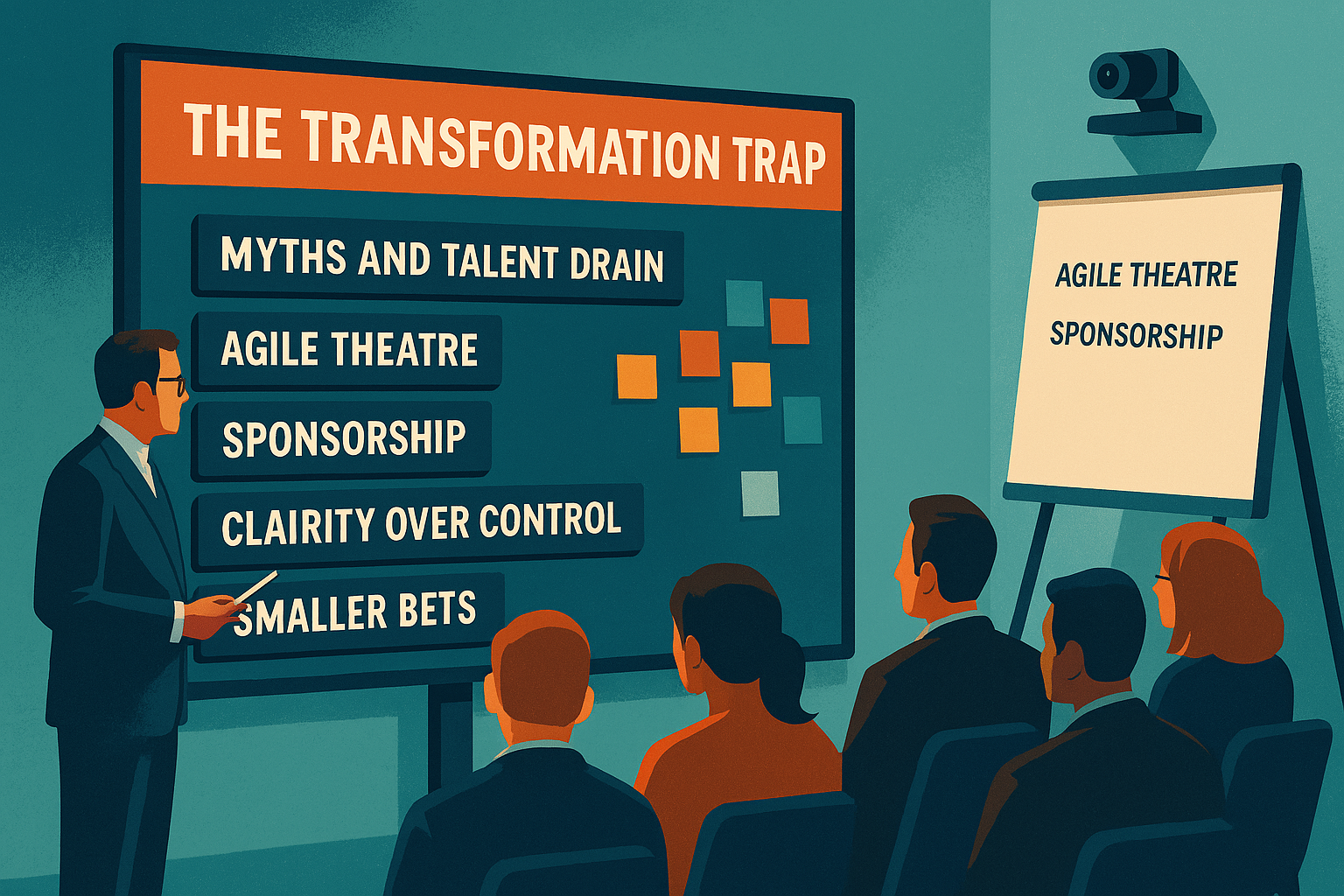The Transformation Trap: Why Big Change Often Fails
Introduction Agile transformations are everywhere. But real success? Rare. Leaders roll out sweeping programs, spend millions, train thousands—and still wonder why results stall or backslide. In this article, we unpack the most common traps of large-scale transformation, and how to avoid them.
The Myth of "Transformation" as a Finish Line One of the biggest missteps is treating transformation like a project with a start and end date. Organisations set out to "become agile" in 18 months. They create roadmaps, hire coaches, launch squads. But agility isn’t a destination. It’s a continuous capability. When companies stop evolving, agility dies.
Too Much Structure, Not Enough Sense-Making When things get hard, the reflex is often to double down on structure. New governance layers. Agile CoEs. RACI charts. Templates. And before long, the system becomes heavier than the one it was meant to replace. Instead of enabling better work, it buries teams in process. Leaders should invest in sense-making, not more ceremony. The point of agility is not control, but clarity.
Change Without Context Copy-pasting Spotify models, SAFe templates, or rituals from tech giants rarely works out. What worked for Spotify worked at Spotify. Context matters. True transformation listens to the organisation’s history, culture, and constraints. Without that, even the most well-funded programs fall flat.
The Talent Drain and the "Agile Theatre" Agility became trendy. Certifications exploded. Roles multiplied. Suddenly everyone was an agile coach. But many lacked depth, leading to shallow coaching and confused teams. As one panellist put it, "We replaced waterfall theatre with agile theatre." Organisations need depth, not just titles. Leaders should prioritise actual experience, not acronyms.
Measuring What Doesn’t Matter Velocity. Story points. Burndown charts. Most agile dashboards measure activity, not impact. This leads to delivery for delivery’s sake—a dangerous game. Instead, transformation should track:
Cycle time to value
Customer satisfaction
Team health
Flow efficiency
The right metrics can turn agility from theatre to business driver.
What Actually Works?
Sponsorship that shows up. Senior leaders who do, not just support, agile thinking.
Local ownership. Empower teams to adapt practices based on their context.
Clarity over control. Remove blockers. Connect people to purpose.
Smaller bets. Avoid the big bang. Focus on capability, not rollout.
Continuous coaching. Not just at the start, but embedded over time.
Conclusion Transformation fails when it becomes a brand exercise or an over-structured rollout. The organisations that win are those that stay honest, stay flexible, and above all—stay human. Because agility isn’t something you install. It’s something you build, nurture, and evolve.

